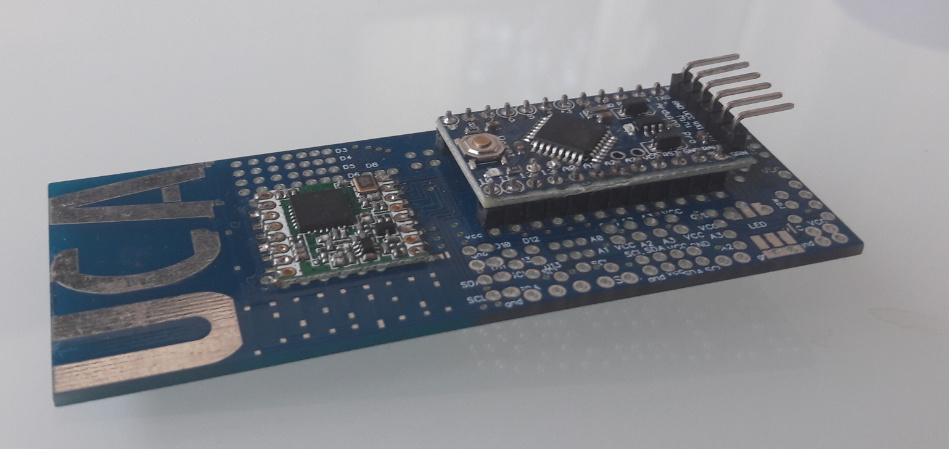Hi,
I want to install a 433 MHz LoraWAN with RAK831 + SX1255, so is there a frequency plan
for the RAK831/ Raspberry PI Kit?
BR
Hi,
I want to install a 433 MHz LoraWAN with RAK831 + SX1255, so is there a frequency plan
for the RAK831/ Raspberry PI Kit?
BR
I also going to use RAK831 433 MHz.
We already have three of it.
For the moment I register with frequency plan as UE-868.
It’s not correct, but initially I’ve seen data packages passed from node-433 MHz.
But now nothing passing.
Is it possible that remotely my Gateway reprogrammed to 868 MHz and now it’s not working totally because 1301 can be programmed to 868MHz, but other HW (amplifiers and etc…) installed for 433 MHz.
Can somebody help with this. How I can program my RAK831 (433MHz version) correctly.
For Server it’s not important how GW programmed. But if some configuration files were remotely sent to GW ?
Why that all community not working with EU-433 MHZ ?
On RakWireless website wrote that they trying to work with LoraIOT because it support CN433.
Hi,
To my understanding, no frequency plan has been proposed for now : https://www.thethingsnetwork.org/wiki/LoRaWAN/Frequencies/Frequency-Plans
I’ have also a 433 GW, I was thinking to use a plan that mimic EU-868 like :
I’m keen to use 433MHz. Can anyone confirm that this works?
Hi,
I set up a 433MHz RAK 831 gateway with TTN.
However, as the EU-433 does not exist in TTN, I choose 868MHz
It works for uplink on the 3 mandatories bands using ABP.
However, downlink is not working, TTN send downlink packet at the wrong frequency (869.525 MHz).
It seems to come from TTN. If I change the freq plan to US915, the dowlink is at 923.3 MHz.
Anybody now how to add a 433 freq plan to TTN ?
Tks
Hi,
For now, my configuration is 
Uplink is working perfectly (so ABP works fine), but downlink is done at the wrong frequency (depending on the freq plan selected).
As an exemple, here is what I have to OTAA and US915 freq plan.

That is to be expected. When a downlink is scheduled the back-end software sends the data to be transmitted including the frequency to be used. To run with 433 you will need to have changes in the back-end as well.
Thanks a lot,
So the EU433 frequency plan in TTN is mandatory for the downlink.
I 've proposed a freq. plan for 433M on the TTN Github. Let’s see what happening.
By the way, I’m developing a dual-band end-node working on 433 and 868 bands with integrated dual-band antenna. I will share my layout after some optimizations.

Is there any progress on this? I have two RAK 433MHz gateways ready to deploy, just waiting for support. I already have a 868MHz gateway and want to compare the range of the two frequencies in real world environment.
We have few RAK 433MHz GWs and we also have problem with that download. I don’t know how those things working on TTN community. Should we start create new configuration for EU433 ? RAK already recomended to use LORIOT for GWs 433 MHz. Means that no hope to have it on TTN ?
I setup my own server based on www.loraserver.io, works perfectly for me while waiting for TTN.
Hi Ferrero,
I do see a problem here! The 433 MHz ISM Band allows you to transmitt between 433,05 MHz and 434,79 MHz. That means, that any LoRa chirp should not exceed that frequency range!
For the lower end 433,05 MHz that means that the lowest frequency you are allowed to set up is 433,050+BW/2. For BW125: 433.050+0,0625MHz = 433,1125 MHz.
For the upper end 434,790 MHz that means that the highest frequency you are allowd to set up is 434,790-BW/2. For BW125: 434,790-0,0625MHz = 434,7275 MHz
So, Frequency 4 is out of band, while on the other side you could go further up to 434,700 MHz.
Why not using 433,2 / ,4 / ,6 / ,8 / 434,0 / ,2 / ,4 / ,6 ?
It’s the same number of channels, but its in-band and keeps enough distance from the band-limits.
Hi,
Thanks for you comment :
Then the plan would be :
However, TTN is not going to support 433MHz band for EU (it was the answer for now) …
It would be nice if they supported 315MHz and 433MHz in the US as well. For underwater (fresh, not salt) sensor networks, the path loss is far less on those lower frequencies. It’s the difference between workable and unworkable.
@ferrero
LoRaWAN has issued a frequency plan for EU433 with first 3 frequencies to be 433.175, 433.375 and 433.575. Downlink on RX2 is defined to be 434.665. Also, RAK proposed a global_conf.json for 433 band (https://github.com/RAKWireless/rak_common_for_gateway/blob/master/lora/rak2245/global_conf/global_conf.eu_433.json) that we can base on.
I believe that using ChirpStack as Network Server can make the downlink work on RX2, otherwise, another solution is to slightly change the downlink message from TTN (which indicate the downlink frequency) in order to replace the downlink frequency by 433.665, instead of the 868.525 for RX2.
regards,